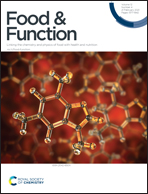Theaflavin protects chondrocytes against apoptosis and senescence via regulating Nrf2 and ameliorates murine osteoarthritis
Abstract
Oxidative stress-mediated excessive apoptosis and senescence of chondrocytes are the main pathological alterations in the osteoarthritis (OA) development. The protective effects of theaflavin (TF), a common group of polyphenols in black tea, against many degenerative diseases by attenuating oxidative stress are well reported. Nevertheless, its role in the OA treatment is still scantily understood. In the current research, by applying enzyme-linked immunosorbent assay (ELISA) kits and immunofluorescent staining, TF treatment was found to inhibit tert-Butyl hydroperoxide (TBHP)-induced imbalance of anabolism and catabolism in primary mouse chondrocytes. Then, according to western blot, live-dead staining, and SA-β-gal staining, the dramatically increased level of apoptosis and senescence of chondrocytes in response to TBHP was also found to be reduced by TF administration. With regard to upstream signaling investigation, the in vitro molecular binding analysis indicated that the beneficial effects of TF might be related to the regulation of the Keap1/Nrf2/HO-1 axis. Furthermore, the Silencing of Nrf2 resulted in the abolishment of the anti-apoptosis and anti-senescence effects of TF. In addition, the oral administration of TF was demonstrated to ameliorate osteoarthritis development in a surgically induced mouse OA model. Taken together, these results suggest that TF might be a promising therapeutic option for the treatment of OA.



 Please wait while we load your content...
Please wait while we load your content...